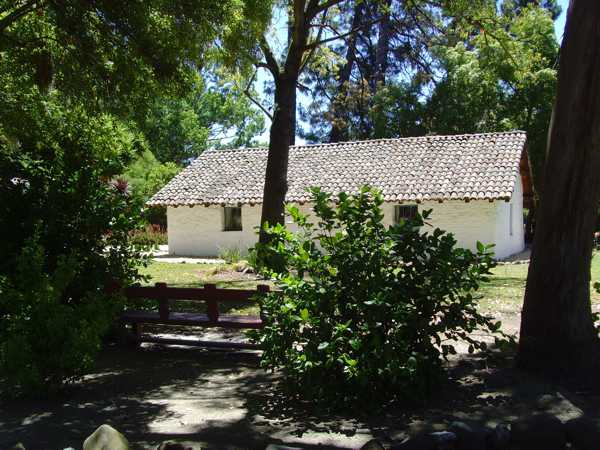|
California Nursery Historical Park
School Field
Trips (Fourth Grade)
Integration of Science with History
all field
trips start at the California Nursery Office and end at Vallejo Adode, build in the 1830's
all field
trips start at the Vallejo Adobe, build in the 1830's
PRICE
$250
Book
field trips by calling (510)790-6284 or email
field@msnucleus.org
|
 |
Rancho Arroyo de la Alameda
Students will learn
about Rancho Period
starting with cattle herding and transitioning to
agriculture.
Students will explore the Vallejo Adobe, built
for the vaqueros and later used for grain storage.
The
Vallejo family used the land (river and soil) to
create a successful wheat business.
Make and take a small adobe brick, walk the grounds and tour
the Museum as students learn the structure of plants.
Mission to Secularization and its impact in California
durting the Rancho Era was a time of freedom and
experimentation. The land supported not only crops but the
hills could support cattle which were important for leather,
tallow, and meat.
The transition from cattle to agriculture changed
the importance of growing trees.
This
field trip explores how Adobe structures were built. They
learn the proportions used in making adobe and made (and take)
their own small adobe brick. They learn about
the rancho times by exploring the Vallejo Family through the
eyes of Maria Gualupe Vallejo, the youngest daughter of the Don
Jesus de Jose Vallejo, the owner of this property during the
Rancho Era.
Where: California
Nursery Historical Park
Dates:
Sept-Nov; March-June
Times:
9:30-11:30; 12:30-2:30
Activities:
Making an adobe brick, grinding of wheat to produce flour,
walk through site and California Nursery Company Office
Lunch: at the Vallejo Adobe or in
nearby picnic benches (no extra charge)
Price: $250. Can accommodate up to 32
students. Chaperones are free but should assist in the
management of students.
Correlation to California History Standards:
California: A Changing State
Students learn the story
of their home state, unique in American history in terms of its
vast and varied geography, its many waves of immigration
beginning with pre-Columbian societies, its continuous
diversity, economic energy, and rapid growth. In addition to the
specific treatment of milestones in California history, students
examine the state in the context of the rest of the nation, with
an emphasis on
4.2 Students describe the social, political, cultural, and economic
life and interactions among people of California from the
pre-Columbian societies to the Spanish mission and Mexican
rancho periods.
1. Discuss the major nations of California Indians, including their
geographic distribution, economic activities, legends, and
religious beliefs; and describe how they depended on, adapted
to, and modified the physical environment by cultivation of land
and use of sea resources.
2. Identify the early land and sea
routes to, and European settlements in, California with a focus
on the exploration of the North Pacific (e.g., by Captain James
Cook, Vitus Bering, Juan Cabrillo), noting especially the
importance of mountains, deserts, ocean currents, and wind
patterns.
3. Describe the Spanish exploration and
colonization of California, including the relationships among
soldiers, missionaries, and Indians (e.g., Juan Crespi, Junipero
Serra, Gaspar de Portola).
4.
Describe the mapping of, geographic basis of, and economic
factors in the placement and function of the Spanish missions;
and understand how the mission system expanded the influence of
Spain and Catholicism throughout New Spain and Latin America.
5. Describe the daily
lives of the people, native and nonnative, who occupied the
presidios, missions, ranchos, and pueblos.
6. Discuss the
role of the Franciscans in changing the economy of California
from a hunter-gatherer economy to an agricultural economy.
7.
Describe the effects of the Mexican War for Independence on Alta
California, including its effects on the territorial boundaries
of North America.8. Discuss the period of Mexican rule in
California and its attributes, including land grants,
secularization of the missions, and the rise of the rancho
economy.
Correlations
to Next
Generation Science Standards (NGSS)
4-LS1 From Molecules to
Organisms: Structures and Processes
Construct an argument that plants and animals have
internal and external structures that function to support
survival, growth, behavior, and reproduction.urneys; the
influence of the terrain, rivers, vegetation, and climate; life
in the territories at the end of these trails).
LS1.A: Structure and Function - Plants
and animals have both internal and external structures that
serve various functions in growth, survival, behavior, and
reproduction. (4-LS1-1)
|

